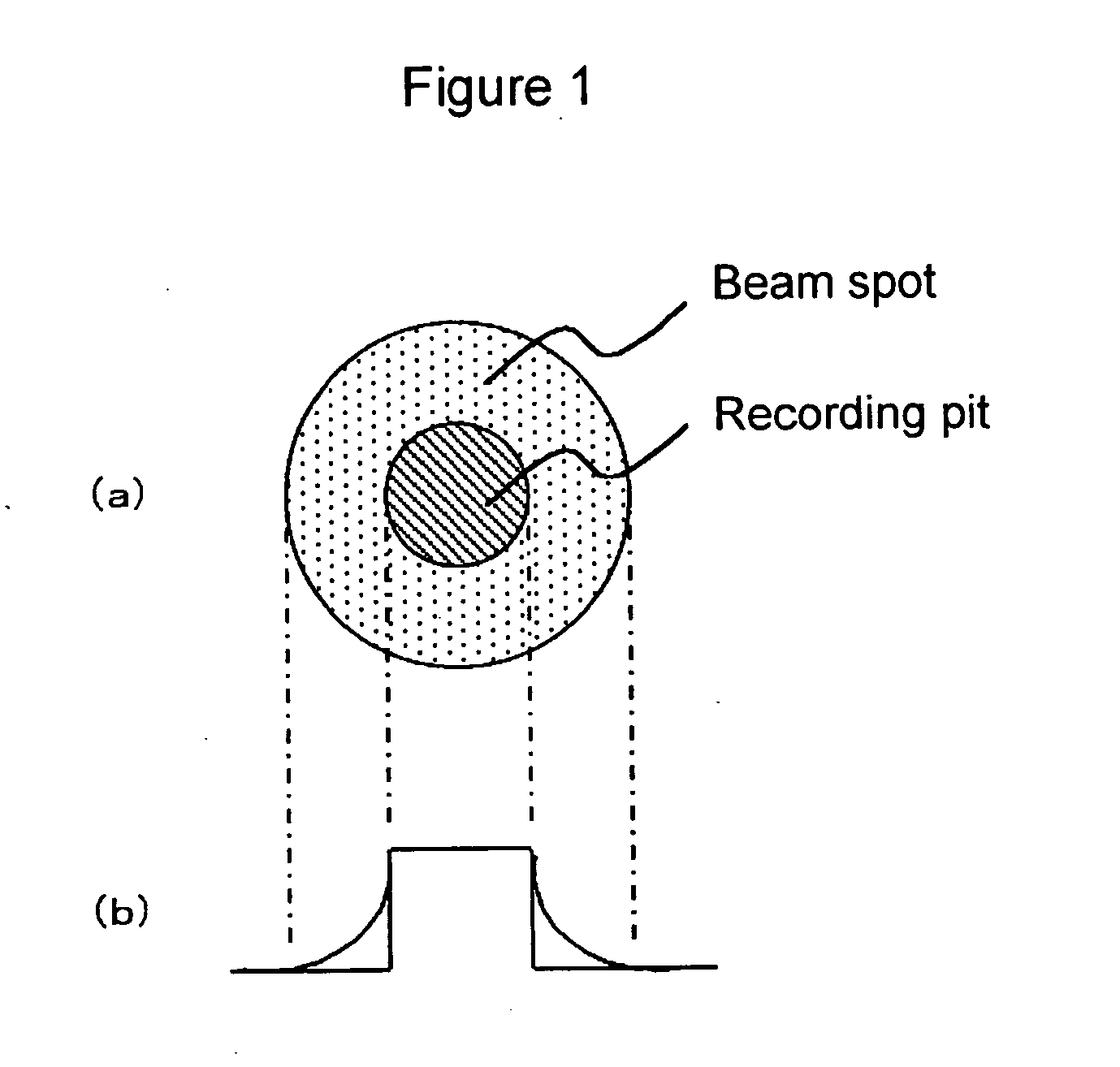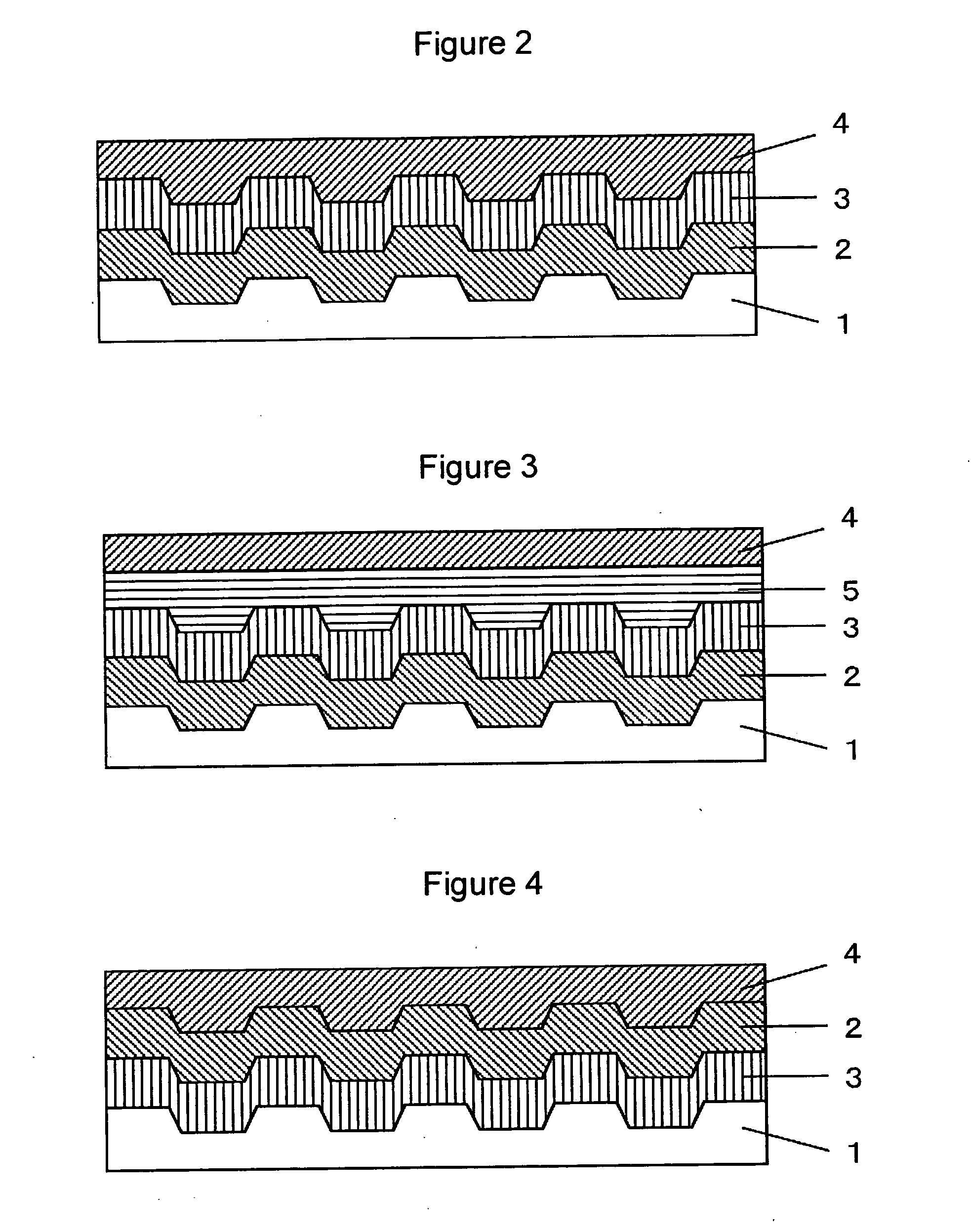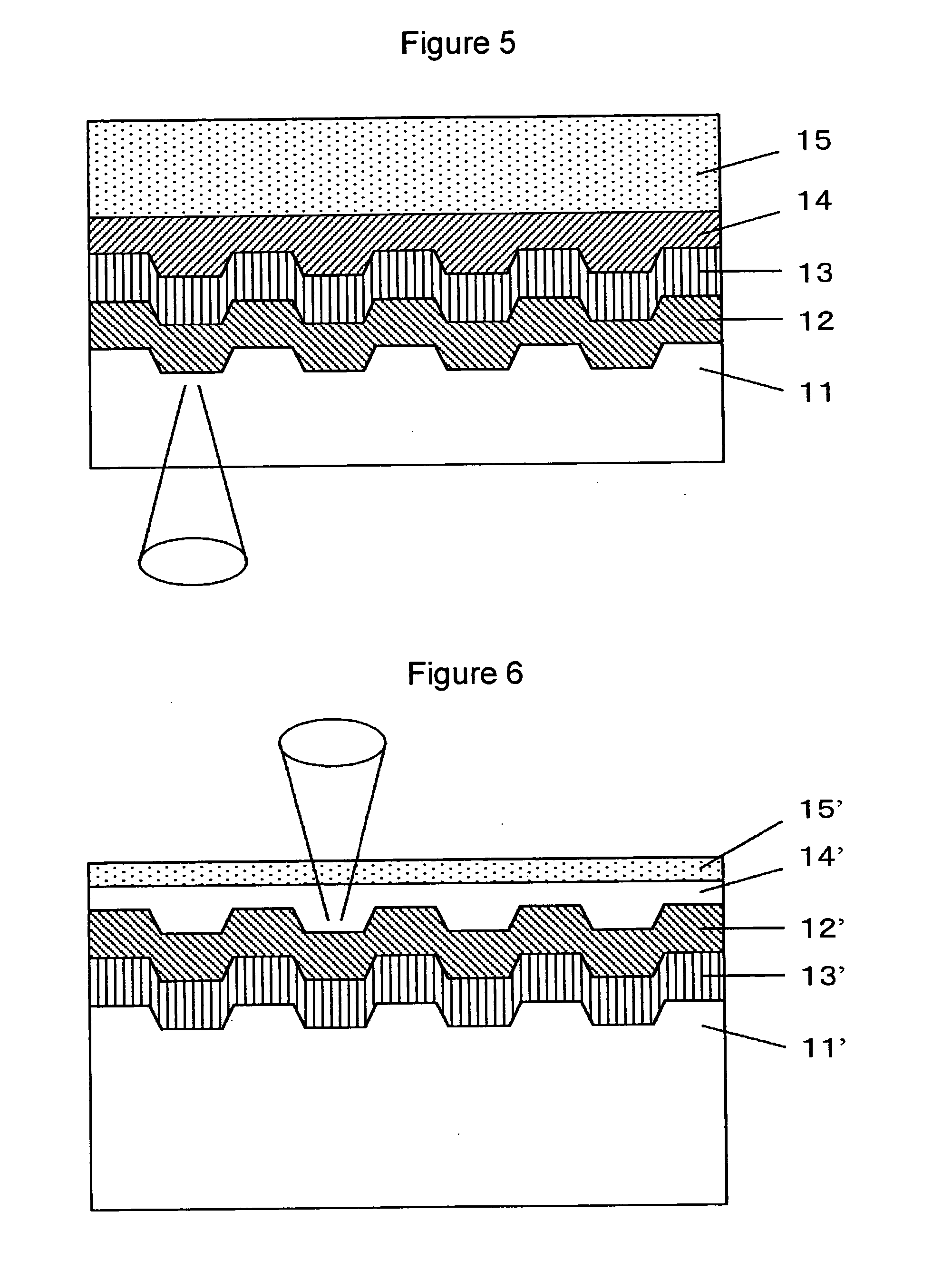Imide compound and optical recording media made by using the same
- Summary
- Abstract
- Description
- Claims
- Application Information
AI Technical Summary
Benefits of technology
Problems solved by technology
Method used
Image
Examples
synthetic example 1
Synthesis of a Compound Represented by Reference Number A-57
[0409]
[0410] 22 parts of 2-ferrocenyl aniline, 15 parts of perylene tetracarboxylic acid dianhydride, 6 parts of anhydrous zinc acetate, and 600 parts of quinoline were added and reacted at 220° C. for 3 hours. The reaction mass was cooled to room temperature and discharged in 4,000 parts of methanol. After filtration, the filtrated matter was washed with methanol and redissolved in chloroform. The solution was dried over anhydrous magnesium sulfate and subsequently subjected to silica gel chromatography (using a developing solution: chloroform / ethyl acetate=9 / 1) to fractionate a target material. After condensation, the obtained solid matter is subjected to sludging with methanol, filtrated and dried to obtain 10 parts of a compound, which was confirmed as a compound represented by reference number A-57 by mass spectrometry.
synthetic example 2
Synthesis of a Compound Represented by Reference Number B-69
[0411]
[0412] 28 parts of 4-ferrocenyl aniline, 13 parts of 1,4,5,8-naphthalenetetracarboxylic acid dianhydride, 300 parts of N,N-dimethylimidazolidine-2-one, and 30 parts of toluene, were added and reacted at 150° C. for 5 hours. The reaction mass was cooled to room temperature and discharged in 3,000 parts of water. After filtration, the filtrated matter was washed with water and dried. The solid matter was subjected to silica gel chromatography (using chloroform as a developing solution) to fractionate a target material. After condensation, recrystallization and drying steps were taken to obtain 6 parts of a compound, which was confirmed as a compound represented by reference number B-69 by mass spectrometric analysis.
synthetic example 3
Synthesis of a Compound Represented by Reference Number B-70
[0413]
[0414] 78 parts of 2-ferrocenyl-5-(2′,4′-dimethylpentane-3′-yl)oxyaniline, 34 parts of 2-bromo-1,4,5,8-naphthalenetetracarboxylic acid dianhydride, 300 parts of acetic acid, were added and reacted at 120° C. for 6 hours. The reaction mass was cooled to room temperature and discharged in 3,000 parts of water. After filtration, the filtrated matter was washed with water and dried. The solid matter was subjected to silica gel chromatography (using chloroform as a developing solution) to fractionate a target material. After condensation, recrystallization and drying steps were taken to obtain 11 parts of a compound, which was confirmed as a compound represented by reference number B-70 by mass spectrometry.
PUM
 Login to View More
Login to View More Abstract
Description
Claims
Application Information
 Login to View More
Login to View More - R&D
- Intellectual Property
- Life Sciences
- Materials
- Tech Scout
- Unparalleled Data Quality
- Higher Quality Content
- 60% Fewer Hallucinations
Browse by: Latest US Patents, China's latest patents, Technical Efficacy Thesaurus, Application Domain, Technology Topic, Popular Technical Reports.
© 2025 PatSnap. All rights reserved.Legal|Privacy policy|Modern Slavery Act Transparency Statement|Sitemap|About US| Contact US: help@patsnap.com



